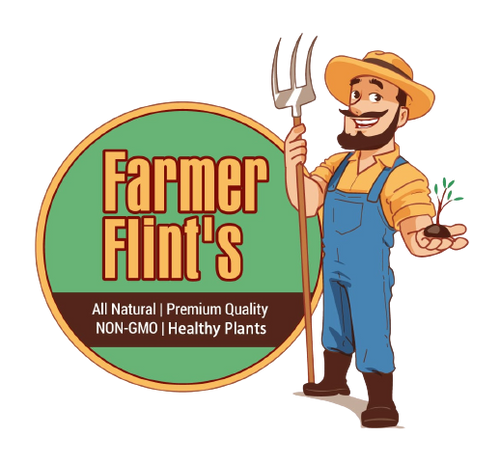Cayenne pepper is a popular chili pepper known for its bright red color and intense heat. It’s a fantastic ingredient used in a wide range of dishes, from spicy sauces to flavorful powders. Growing your own cayenne peppers offers numerous advantages, including the ability to harvest fresh peppers at any time. Whether you plan to grow them in your backyard garden or inside your home, with the right approach, cayenne peppers can thrive in a variety of environments.
Why Grow Cayenne Peppers?
Cayenne peppers are an excellent plant to grow for several reasons:
- Culinary Use: These peppers are used in a wide range of dishes and can be dried, powdered, or used fresh.
- Health Benefits: High in vitamins A and C, cayenne peppers are known for their antioxidant properties and can promote metabolism.
- Low Maintenance: Cayenne peppers are relatively easy to care for and are a great choice for beginners.
Steps to Grow Cayenne Peppers
1. Select the Right Cayenne Pepper Variety
There are various types of cayenne peppers, and choosing the right variety will depend on your taste preferences and available space. Popular options include:
- Long Slim Cayenne: The traditional cayenne pepper, commonly used for its spicy heat.
- Caribbean Red Cayenne: A hotter variant that grows faster.
- Ring of Fire: A compact version that matures early, ideal for small spaces.
Pick the one that suits your growing conditions and how much heat you want in your peppers.
2. Starting from Seeds or Seedlings
Cayenne peppers can be grown from seeds or as young plants from a nursery.
- From Seeds: Start your seeds indoors about 8-10 weeks before the last frost date in your region.
- From Seedlings: If you want to bypass the germination process, buy young plants and transplant them into your garden or containers.
3. Ideal Growing Conditions for Cayenne Peppers
Light: Cayenne peppers require full sunlight. They need at least 6-8 hours of light each day. If growing indoors, use LED grow lights to supplement.
Soil: Use a well-draining, nutrient-rich soil mix with a pH level between 6.0 and 7.0. A mix of compost or organic matter works well.
Temperature: Peppers thrive in warm temperatures. Maintain daytime temperatures of 70-85°F, and nighttime temperatures should not dip below 55°F.
4. Planting Cayenne Peppers
Outdoors:
- Wait until the last frost has passed and the soil has warmed to around 60°F.
- Space the plants 18-24 inches apart to allow for proper airflow.
In Containers:
- Select a pot that is at least 10-12 inches deep.
- Ensure the container has drainage holes and use a high-quality potting mix for best results.
5. Watering and Feeding
- Watering: Keep the soil consistently moist but avoid waterlogging. Water the plants when the top inch of soil feels dry.
- Fertilizing: Use a balanced fertilizer like a 10-10-10 formula. Fertilize every 2-3 weeks during the growing season. Once flowering begins, switch to a fertilizer higher in potassium and phosphorus to promote fruiting.
6. Pruning and Care
- Regularly remove dead or yellowing leaves to maintain plant health and promote airflow.
- Pinch off the first few flowers to allow the plant to focus on strong foliage growth.
- If the plant grows tall or produces many peppers, use stakes or cages to prevent branches from breaking under the weight of the fruit.
7. Managing Pests and Diseases
Cayenne peppers are generally resistant to pests, but some may occasionally appear.
- Common Pests: Aphids, spider mites, and whiteflies may be found. Treat with a mixture of water and mild soap to keep these insects at bay.
- Prevent Diseases: Ensure the plants have enough space to reduce the risk of fungal diseases like root rot or powdery mildew. Avoid overwatering and always plant in well-draining soil.
When to Harvest Cayenne Peppers
Cayenne peppers usually take 70-100 days to mature. They are ready for harvest when they turn bright red, although they can also be picked when green for a milder flavor.
- Harvesting Tips: Use scissors or pruning shears to cut peppers off the plant, leaving a small portion of the stem attached.
- Encourage Growth: Picking peppers regularly helps the plant focus on producing more fruit.
How to Preserve Cayenne Peppers
After harvesting, cayenne peppers can be preserved in various ways:
- Drying: You can air dry, use a dehydrator, or hang peppers in bunches to dry them for powder or flakes.
- Freezing: Freeze whole peppers in airtight containers for later use in cooking.
- Pickling: For a tangy twist, preserve cayenne peppers in vinegar and spices.
Troubleshooting Common Growing Issues
- Slow Growth: This could be due to insufficient warmth or poor soil quality. Make sure the plants are in the right temperature range and that the soil is rich in nutrients.
- Yellowing Leaves: Overwatering or nutrient deficiencies might be the cause. Adjust watering habits or use a fertilizer suited for pepper plants.
- No Fruit Production: If your plants aren’t producing fruit, this could be due to poor pollination or temperature stress. Ensure that the flowers are properly pollinated and maintain a stable temperature.
Conclusion
Growing cayenne peppers is an enjoyable and satisfying experience that can yield spicy, flavorful results. Whether you’re growing them for culinary purposes or for their health benefits, cayenne peppers are easy to grow with the right care and attention. By following the steps in this guide, you can successfully grow cayenne peppers in your garden or even indoors, bringing fresh and flavorful heat to your cooking all year round.


